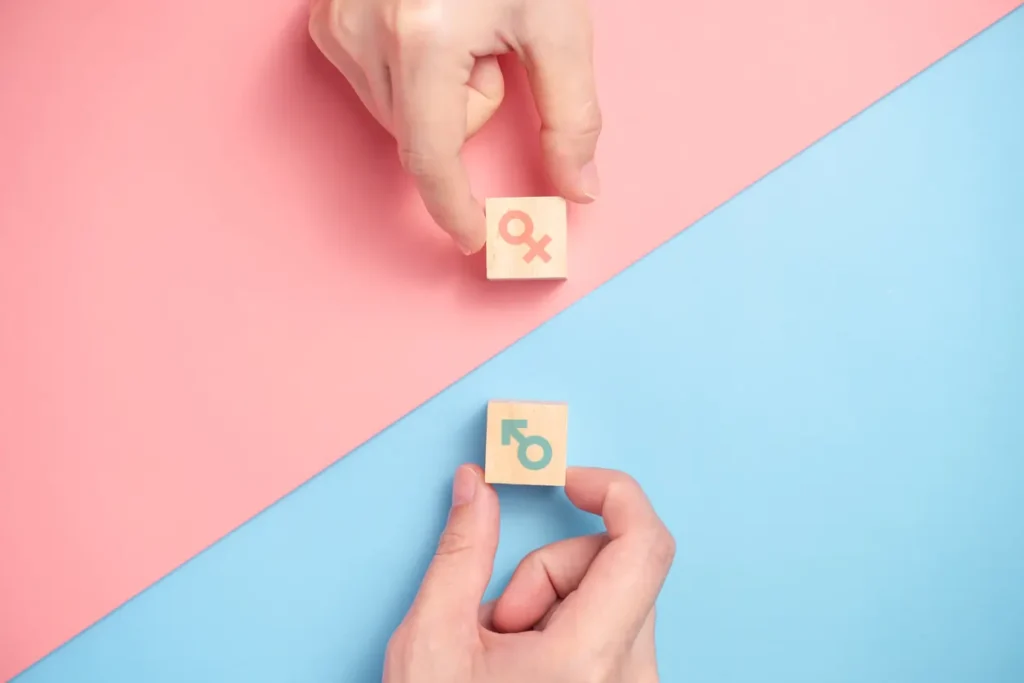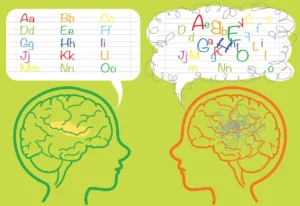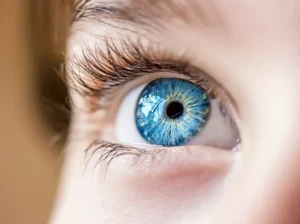
Story at-a-glance
- Learning disabilities affect girls just as much as boys – Despite common perception, research shows similar prevalence rates between genders, but girls are significantly under-identified and under-served in most educational settings.
- Girls often “fly under the radar” – While boys typically display disruptive behaviors that get attention, girls are more likely to internalize struggles, appearing quiet, compliant, or “dreamy” rather than problematic.
- Masking and coping strategies hide difficulties – Many girls develop sophisticated strategies to hide their learning challenges, working twice as hard to appear successful while quietly struggling with anxiety, perfectionism, and self-doubt.
- Recognition requires different approaches – Understanding how learning disabilities manifest differently in girls helps parents and educators identify children who need support before struggles become overwhelming and self-esteem is damaged.
If you picture a child with a learning disability, what image comes to mind? For most people, it’s likely a boy who’s disruptive in class, can’t sit still, or acts out when faced with challenging work. This mental image isn’t entirely wrong – many boys with learning disabilities do present this way. But this stereotype has created a significant blind spot that leaves countless girls struggling in silence, their learning differences unrecognized and unsupported.
The reality is that learning disabilities affect girls and boys at roughly equal rates, but girls are dramatically under-identified in most school systems. While boys are typically diagnosed in elementary school when their behaviors become disruptive, girls often go unnoticed until middle school, high school, or even adulthood – if they’re identified at all.
This gender gap in identification isn’t just a statistical problem – it represents thousands of bright, capable girls who spend years believing they’re “not smart enough,” developing anxiety and depression, and missing out on the support that could help them thrive. Understanding how learning disabilities manifest differently in girls is crucial for ensuring that all children receive the help they need.
The Statistics Tell a Story
The Identification Gap
Current special education statistics show boys being identified with learning disabilities at rates roughly 2-3 times higher than girls. However, research studies that actively screen for learning disabilities find much more equal prevalence rates between genders. This suggests that the difference isn’t in who has learning disabilities, but in who gets identified and receives services.
The gap is particularly pronounced in certain areas. Boys are identified with ADHD at rates 3-4 times higher than girls, yet when researchers use more comprehensive assessment methods, they find that girls have ADHD nearly as often as boys – they just present differently. Similarly, boys receive dyslexia diagnoses more frequently, but careful research reveals similar rates of reading difficulties in girls.
Age of Identification Differences
When girls are identified with learning disabilities, it typically happens much later than for boys. Boys are often identified in kindergarten through third grade when academic demands increase and behavioral issues become apparent. Girls, however, are more likely to be identified in middle school or high school, when academic demands become so complex that their coping strategies can no longer mask their difficulties.
This delay in identification means that girls often spend years struggling without support, developing secondary emotional issues, and falling further behind academically before receiving help. By the time they’re identified, the gaps may be larger and the emotional damage more significant than if they had been recognized earlier.
How Learning Disabilities Look Different in Girls
Internalizing vs. Externalizing Behaviors
Perhaps the most significant difference in how learning disabilities present in girls versus boys is the tendency for girls to internalize their struggles rather than externalize them. When boys are frustrated or overwhelmed, they’re more likely to act out, become disruptive, or refuse to do work – behaviors that quickly get adult attention.
Girls, on the other hand, are more likely to internalize their struggles. They might become withdrawn, anxious, or perfectionistic. They might work much harder than their peers to produce the same results, or they might simply give up quietly without making a fuss. These behaviors are less disruptive to the classroom environment, so they’re less likely to trigger referrals for evaluation.
The “Good Student” Mask
Many girls with learning disabilities become expert at appearing to be good students even when they’re struggling significantly. They might sit quietly in class, nod when teachers explain concepts they don’t understand, and turn in completed assignments even when the work was extraordinarily difficult for them.
These girls often develop sophisticated compensatory strategies that help them hide their difficulties. A girl with dyslexia might memorize entire books to appear fluent in reading. A girl with math disabilities might rely heavily on counting strategies long after peers have moved to more efficient methods. A girl with ADHD might use extensive organizational systems and work much longer than necessary to complete tasks.
Perfectionism and Anxiety
Girls with learning disabilities often develop perfectionist tendencies as a way of coping with their struggles. They might spend hours on assignments that peers complete quickly, check and recheck their work obsessively, or become paralyzed by fear of making mistakes. This perfectionism can actually mask learning difficulties because the final products may appear acceptable, even though the process is inefficient and emotionally exhausting.
This perfectionism often comes with significant anxiety. Girls might develop physical symptoms like stomachaches or headaches, have trouble sleeping, or become overwhelmed by academic demands. Unfortunately, these emotional symptoms are often treated in isolation without recognition that they might stem from underlying learning difficulties.
Specific Conditions That Affect Girls Differently
ADHD in Girls: The Daydreamer Profile
ADHD in girls often looks completely different from the hyperactive, impulsive presentation that most people associate with the condition. Girls are more likely to have the inattentive presentation of ADHD, which can make them appear dreamy, spacey, or simply unmotivated rather than disruptive.
These girls might stare out the window during class, lose track of conversations, forget instructions immediately after hearing them, or have difficulty organizing their thoughts and materials. They’re often described as “airheads” or “ditzy” rather than having their attention difficulties recognized as neurological differences that require support.
The hyperactive component of ADHD can also look different in girls. Instead of physical hyperactivity, girls might show cognitive hyperactivity – racing thoughts, excessive talking, or difficulty quieting their internal mental chatter. They might appear to be good listeners while actually struggling to focus on what’s being said.
Dyslexia: Hidden Behind Compensation
Girls with dyslexia often develop remarkable compensatory strategies that can mask their reading difficulties for years. They might become excellent at using context clues, memorizing sight words through sheer repetition, or relying on their strong verbal skills to understand content even when decoding is difficult.
These compensation strategies can be so effective that reading difficulties don’t become apparent until academic demands increase significantly. A girl might appear to read well in elementary school but struggle when faced with the complex texts and heavy reading loads of middle and high school.
Math Disabilities and Stereotype Threat
Girls with math disabilities face the additional challenge of societal stereotypes about girls and mathematics. Because there’s still a cultural expectation that girls will struggle more with math, genuine math disabilities might be overlooked or attributed to normal gender differences rather than recognized as learning disabilities requiring support.
This can lead to girls accepting poor math performance as inevitable rather than seeking help. They might avoid advanced math courses, limit their career aspirations, or develop math anxiety that compounds their underlying learning difficulties.
Executive Function Challenges
Executive function difficulties can be particularly challenging for girls because organizational and time management skills are often expected to develop naturally, especially in girls who are typically seen as more naturally organized than boys. A girl with executive function challenges might be viewed as lazy, careless, or unmotivated rather than having her difficulties recognized as neurological differences.
These girls might consistently forget assignments, lose important papers, struggle with time management, or have difficulty planning and completing long-term projects. Their struggles might be attributed to not trying hard enough rather than to genuine difficulties with executive functioning.
The Masking Phenomenon
Working Twice as Hard for Half the Credit
Many girls with learning disabilities develop patterns of working significantly harder than their peers to achieve similar results. They might spend three hours on homework assignments that peers complete in one hour, study extensively for tests while classmates barely review, or rewrite assignments multiple times to achieve acceptable quality.
This extraordinary effort can mask the underlying learning difficulties because the end results may appear adequate. Teachers and parents might not realize how much extra work is required, leading them to have unrealistic expectations and missing the signs that additional support is needed.
Social and Emotional Costs
The effort required to mask learning difficulties takes a significant toll on girls’ social and emotional well-being. They might have little time for social activities because they’re constantly working to keep up academically. They might develop anxiety about being “found out” or fear that others will discover they’re not as smart as they appear.
Many girls report feeling like “impostors” – successful on the surface but convinced that they’re fooling everyone and will eventually be exposed as inadequate. This impostor syndrome can persist into adulthood, affecting career choices and life satisfaction even after learning disabilities are identified and addressed.
The Breaking Point
Eventually, most masking strategies reach a breaking point where the demands become too complex or intense to manage through compensation alone. This often happens during transitions – from elementary to middle school, middle to high school, or high school to college – when academic demands increase significantly.
When masking strategies fail, girls often experience what appears to be a sudden decline in performance, but is actually the result of years of struggling without appropriate support. Unfortunately, by this time, the emotional impact may be significant and the academic gaps may be substantial.
Cultural and Social Factors
Gender Expectations and Stereotypes
Cultural expectations about how girls “should” behave can contribute to the under-identification of learning disabilities. Girls are often expected to be quiet, compliant, and less disruptive than boys. When they struggle academically, their difficulties might be attributed to not working hard enough, being too social, or lacking confidence rather than having genuine learning differences.
These same expectations can lead girls to hide their struggles to avoid disappointing parents and teachers who expect them to be successful students. The pressure to be “good girls” can prevent them from advocating for themselves or asking for help when they need it.
The Role of Self-Advocacy
Girls are often socialized to be accommodating and avoid calling attention to themselves, which can make self-advocacy particularly challenging. They might be reluctant to ask for help, question teaching methods that don’t work for them, or request accommodations they need to succeed.
This reluctance to self-advocate can persist into adulthood, affecting college and career success even when learning disabilities are eventually identified. Teaching girls to advocate for themselves becomes particularly important given these socialization patterns.
Academic vs. Social Success
For many girls, social success can compensate for academic struggles in ways that mask learning difficulties. A girl who’s popular and well-liked might have her academic struggles overlooked because she seems successful in other areas. Conversely, academic struggles might be attributed to prioritizing social activities over schoolwork.
This can create a false dichotomy where girls feel they must choose between academic success and social acceptance, when the real issue might be unidentified learning differences that could be addressed with appropriate support.
Signs Parents and Teachers Should Watch For
Academic Red Flags in Girls
Look for patterns of inconsistent performance where a girl might excel in some areas while struggling significantly in others. Pay attention to the amount of time and effort required to complete assignments – if your daughter consistently needs much more time than peers or becomes extremely upset about homework, this might indicate underlying learning difficulties.
Watch for avoidance behaviors like “forgetting” assignments, claiming work is “too hard,” or becoming upset when faced with certain types of tasks. These behaviors might be subtle and expressed as anxiety or sadness rather than obvious defiance.
Emotional and Behavioral Indicators
Girls with unidentified learning disabilities often develop secondary emotional symptoms. Watch for increased anxiety about school, perfectionist tendencies that seem extreme, or signs of depression like withdrawal or loss of interest in activities.
Physical symptoms can also be indicators – frequent headaches, stomachaches, or sleep difficulties, especially when they occur in relation to school or homework. Many girls express their academic stress through physical symptoms rather than behavioral outbursts.
Social and Self-Esteem Signs
Pay attention to changes in self-talk and self-perception. Girls might begin saying things like “I’m stupid,” “I’m not good at school,” or “I’ll never be smart like other kids.” They might compare themselves negatively to peers or siblings who seem to have an easier time with academic work.
Social withdrawal or changes in friend groups might also be indicators. Some girls avoid social situations where academic performance might be discussed or compared, while others might gravitate toward younger children or peers who also struggle academically.
Supporting Girls with Learning Disabilities
Creating Safe Spaces for Struggle
Help girls understand that struggling with learning doesn’t reflect their intelligence or worth. Create environments where it’s safe to admit when something is difficult and where asking for help is seen as a strength rather than a weakness.
Normalize the experience of needing different approaches to learning and emphasize that everyone has areas of strength and challenge. Share examples of successful women who have learning disabilities to help girls understand that these challenges don’t limit their potential.
Teaching Self-Advocacy Skills
Explicitly teach girls how to recognize when they need help and how to ask for it effectively. Practice conversations about academic needs and help them understand their rights to appropriate accommodations and support.
Role-play situations where they might need to advocate for themselves with teachers, tutors, or other adults. Help them develop the confidence and skills to communicate their needs clearly and effectively.
Balancing Support with Independence
While providing necessary support, also focus on building independence and self-confidence. Help girls understand their learning differences and develop strategies they can use independently. The goal is supporting them while also building their capacity to manage their learning needs over time.
Celebrate effort and growth rather than just final outcomes. Help girls understand that the process of learning can be different for everyone and that their hard work and persistence are valuable regardless of how their performance compares to others.
Moving Forward: Improving Identification
Professional Awareness and Training
Educators and healthcare professionals need better training about how learning disabilities manifest in girls. Assessment tools and identification criteria should be examined for potential gender bias, and professionals should be aware of the tendency for girls to mask their difficulties.
Schools need to look beyond disruptive behavior when identifying students who might benefit from evaluation. Academic struggles, even when accompanied by good behavior, should be taken seriously and investigated thoroughly.
Parent Education and Awareness
Parents need information about how learning disabilities can look different in girls so they can recognize signs and advocate for their daughters when necessary. This includes understanding that quiet, compliant behavior doesn’t necessarily indicate that everything is fine academically.
Trust your instincts if you notice your daughter working much harder than peers, showing signs of academic anxiety, or expressing negative self-perceptions about her abilities. These patterns warrant investigation even if school performance appears adequate.
Creating Gender-Sensitive Assessment Practices
Assessment practices should account for the different ways learning disabilities might manifest in girls. This might include evaluating masking behaviors, considering the effort required to achieve results, and looking for signs of anxiety or perfectionism that might indicate underlying struggles.
Evaluators should also consider the potential impact of socialization and cultural expectations on how girls express their difficulties and ask for help.
Hope and Support for the Future
Understanding gender differences in learning disabilities isn’t about creating separate categories or different standards – it’s about ensuring that all children, regardless of gender, receive the support they need to succeed. When girls’ learning differences are recognized and addressed appropriately, they can achieve remarkable success.
Many successful women have learning disabilities and have found ways to leverage their strengths while managing their challenges. With proper identification and support, girls with learning disabilities can develop the skills and confidence they need to pursue their goals and aspirations.
The key is recognition – seeing past the “good student” facade to identify girls who are struggling and providing them with appropriate support. When we understand how learning disabilities can look different in girls, we can ensure that no child falls through the cracks simply because their struggles don’t match traditional expectations.
Your daughter’s quiet struggles are just as important as more obvious signs of learning difficulties. Trust your observations, advocate for comprehensive evaluation when needed, and remember that with appropriate support, girls with learning disabilities can achieve anything they set their minds to. The goal is ensuring they receive that support before years of struggle damage their confidence and self-esteem.
Every girl deserves to have her learning needs recognized and addressed. By understanding gender differences in learning disabilities, we can work toward a future where all children – regardless of how they express their struggles – receive the support they need to thrive.
Sources
- Quinn, P. O., & Madhoo, M. (2014). A review of attention-deficit/hyperactivity disorder in women and girls. The Primary Care Companion for CNS Disorders, 16(3).
- Millenet, S., Laucht, M., Hohm, E., et al. (2018). Sex-specific trajectories of ADHD symptoms from adolescence to young adulthood. Journal of the American Academy of Child & Adolescent Psychiatry, 57(7), 475-484.
- Arnett, A. B., Pennington, B. F., Willcutt, E. G., et al. (2015). Sex differences in ADHD symptom severity. Journal of Child Psychology and Psychiatry, 56(6), 632-639.
- National Center for Learning Disabilities. (2020). “The State of Learning Disabilities: Understanding the 1 in 5.” Retrieved from https://www.ncld.org/research/state-of-learning-disabilities/
- Hinshaw, S. P., Owens, E. B., Zalecki, C., et al. (2012). Prospective follow-up of girls with attention-deficit/hyperactivity disorder into early adulthood. Journal of the American Academy of Child & Adolescent Psychiatry, 51(3), 263-273.
Note: This blog post is intended for educational purposes only. While the information presented is based on scientific research, individual situations vary. Please consult with qualified professionals for proper assessment and individualized recommendations.



